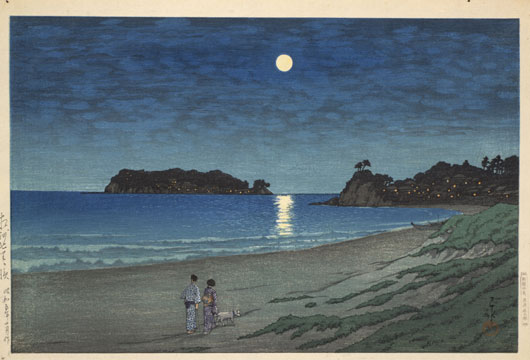From Edo to Meiji – Fujisawa & Enoshima Island: The Landscapes Continue to be Drawn

Hasui Kawase
Because of the Meiji Restoration, the era of Tokugawa Shogunate that prospered for 260 years ended. The period shifted from Edo to Meiji. Yet, ukiyo-e that “reflects the contemporary”, continued to play the major roles: Meisho-e that illustrated the newly introduced cultures, kaika-e that depicted the Meiji Restoration, nishiki-e shinbun (newspapers with illustrations of polychrome print) and the illustrations of Imperial House all played important roles by introducing the situation of newly transformed society.
Ukiyo-e gradually declined by newly presented media such as newspapers and photos. However ukiyo-e artists turned into illustrators or painters of Japanese style paintings, as bird-eye view picture of Yoshida Hatsusaburo were increasingly popular during Taisho to Showa period, the tradition of ukiyo-e were passed down to the different genres.
In the late Meiji period, the techniques to produce pictures greatly shifted from woodblock prints that supported the foundation of ukiyo-e, to lithographs or copperplate engraving techniques. The techniques of pictures went through great changes. However, instead of ukiyo-e artists, the landscapes of “Fujisawa” and “Enoshima Island”, as the famous places, continue to be drawn by newly emerged “painters”.




